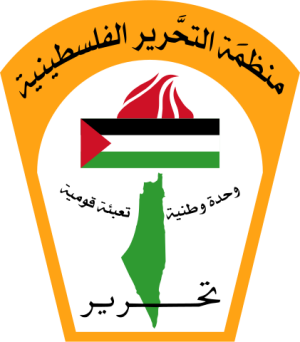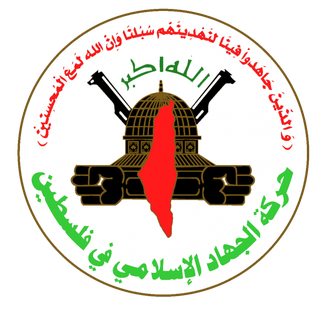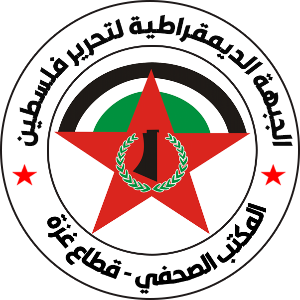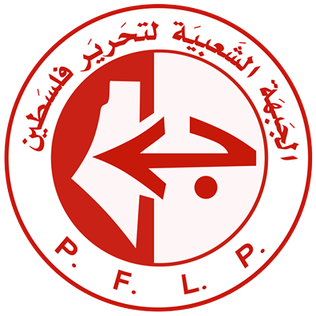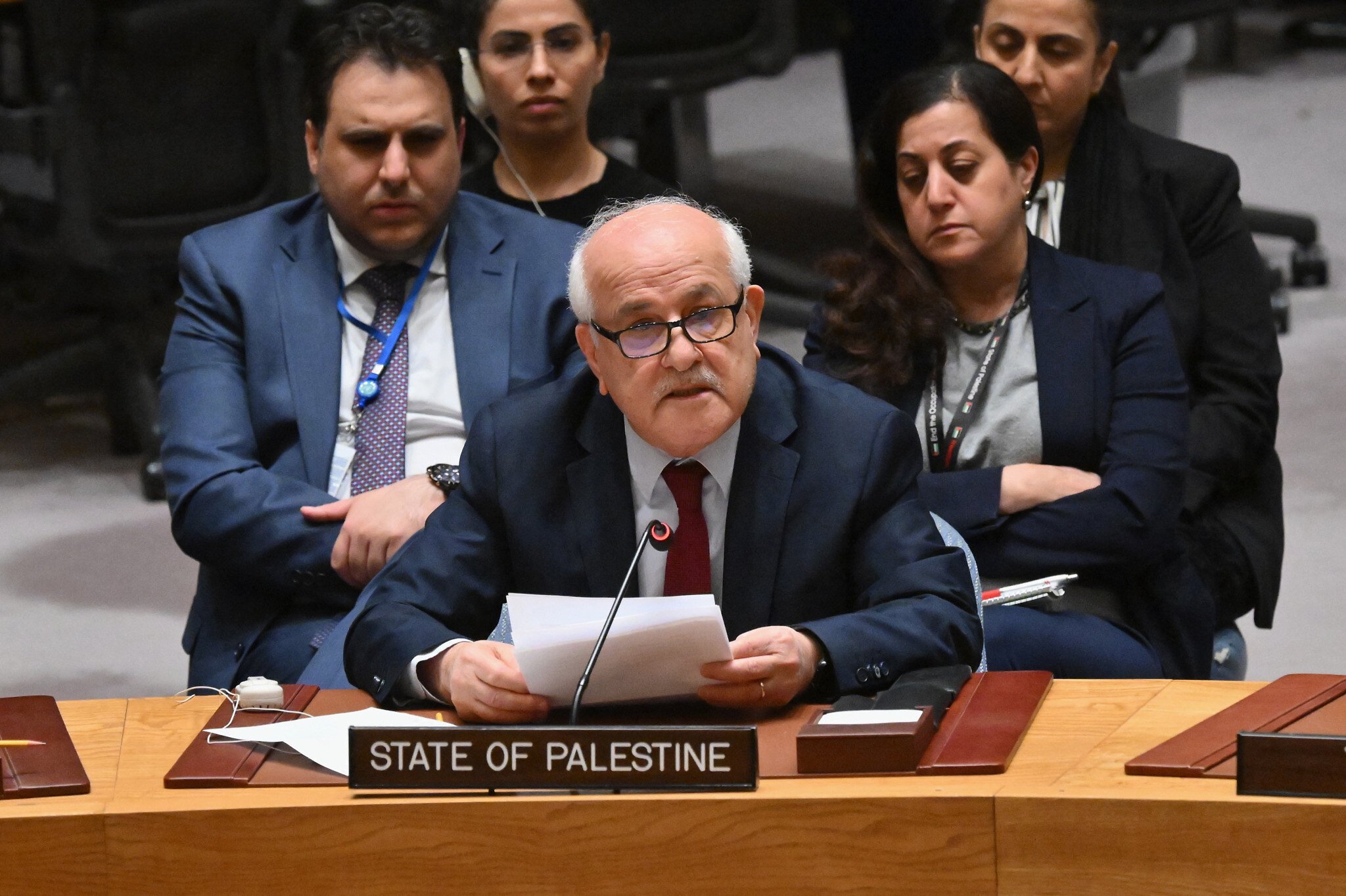Equivocation, or what is the "State of Palestine"
In logic, equivocation constitutes a fallacy or deception involving the use of a single term to refer to multiple entities within the same argument.
Such a tactic is sometimes employed in applied jurisprudence, for example, when the same name is used for multiple legal entities which may have different statuses (commercial or non-profit) or are registered under different jurisdictions. For instance, certain rights or privileges belonging to one legal entity (such as a license or insurance) might be utilized by another legal entity bearing the same name.
This deception forms the basis for the activities of the so-called "State of Palestine," particularly in its engagement with the process at the International Criminal Court (case ICC-01/18 "Situation in Palestine").
This deception involves using the term "State of Palestine" to denote different entities, attempting (so far successfully) to present them as one and the same.
We have previously discussed the concept of "international legal personality" in the article "How to Expel the Russian Federation from the UN", where we demonstrated that the Russian Federation and the USSR are different subjects of international law.
There are two entities that are being conflated: 1) Palestinian National Authority (PNA) established in 1994, 2) the "State of Palestine" declared in Algiers in 1988
(1) The State of Palestine declared in Algiers in 1988
Declaration of Independence
From November 12 to 15, 1988, in Algiers, the 19th extraordinary session of the Palestinian National Council, an organ of the Palestine Liberation Organization, was held.
This session was named by the Council itself (see the Political Communiqué of the Palestine National Council of 15 November 1988) "the session of the intifadah."
The term "intifada" (or "intifadah") refers to the uprising of Palestinian Arabs against Israel that began in December 1987. The term "intifada" emerged with the creation of the organization Hamas (founded in 1987), which first used it to describe the uprising in one of its initial statements on December 11, 1987 (see الانتفاضة الفلسطينية الأولى (Wikipedia: the first intifada)).
On November 15, at the "intifada session" in Algiers, Yasser Arafat proclaimed the Palestinian Declaration of Independence (Arabic: إعلان الاستقلال الفلسطيني) (see the Political Communiqué of the Palestine National Council and the Declaration of Independence of 15 November 1988, and text of the Declaration in Arabic)
The text of the declaration was written by Mahmoud Darwish, laureate of the International Lenin Peace Prize "For Strengthening Peace Among Nations," a Muslim communist who studied political economy at Moscow State University and also wrote poetry, which influenced the poetic style of the declaration.
The Declaration stated the following:
The National Council declares, in the name of Allah and in the name of the Arab Palestinian people, the establishment of the State of Palestine on our Palestinian land, with its capital in Holy Jerusalem (Al-Quds Ash-Sharif).
النص الأصلي بالعربية: فإن المجلس الوطني يعلن، باسم الله وباسم الشعب العربي الفلسطيني قيام دولة فلسطين فوق أرضنا الفلسطينية وعاصمتها القدس الشريف.
Territory
In the declaration, only the capital of the proclaimed "State of Palestine" (Holy Jerusalem) was explicitly mentioned, but the exact boundaries of the "Palestinian land," i.e. the territory of the proclaimed state that the Palestine Liberation Organization had in mind, were not explicitly defined.
i.e., the territory of the proclaimed state, were not specified by the Palestine Liberation Organization (PLO).
The territory of the Mandate for Palestine issued by the League of Nations (Mandate for Palestine), also included the area between the Jordan River and the eastern boundary of Palestine, where in 1946, the Hashemite Kingdom of Transjordan was established (now Jordan).
However, the PLO, proclaiming itself the representative of the "Palestinian people," carefully avoided mentioning that Jordan also is Palestine.
The determination of what constitutes "Palestinian territory" according to the PLO can be inferred from the emblem of the organization, which depicts "Palestine" in their understanding, i.e., only the territory of Israel:
This same map appears on the emblems of leading organizations of the "First Intifada," specifically on the emblem of Hamas:
Palestinian Islamic Jihad:
Democratic Front for the Liberation of Palestine:
Popular Front for the Liberation of Palestine:
Despite the PLO leading the "Intifada," it did not control any part of the territory it intended to seize during the uprising.
Government
On December 9, 1988, the PLO's representative to the UN delivered a letter to the UN Secretary-General, which included the "Declaration of the formation of the provisional Government of the State of Palestine" of the State of Palestine" accepted by the PLO at the same "Intifada Session" on November 15, 1988, which stated:
"A provisional Government shall be formed for the State of Palestine as soon as possible, in accordance with circumstances and the evolution of events."
According to available information, on April 2, 1989, the PLO's Central Council elected Yasser Arafat as president of the "State of Palestine" and designated Faruq al-Qaddumi as foreign minister.
"On April 2, 1989, the PLO's Central Council unanimously elected Arafat president of the self-proclaimed Palestinian state and designated Faruk Qaddumi as foreign minister ..."
(Tom Lansford, Political Handbook of the World 2014, p. 1628. CQ Press, March 2014.)
No further appointments to the positions of president or foreign minister have been made since the deaths of Yasser Arafat and Faruq al-Qaddumi.
Diplomatic Recognition
At the time of the proclamation of the "State of Palestine," the states of the Arab League (except Egypt) and the Soviet Union did not recognize the State of Israel. Adn by the end of 1988, the "State of Palestine" was recognized by more than 80 states - predominantly Arab and Muslim countries, along with the Soviet Union and its satellites. By 1994, the "State of Palestine" had received diplomatic recognition from 95 states (see Diplomatic recognitions)
Status in the UN
On November 29, 2012, the General Assembly adopted resolution 67/19 "Status of Palestine in the United Nations" (see full text Status of Palestine in the United Nations), which, among other things, referenced:
(a)
"resolution 43/177 of 15 December 1988, by which it, inter alia, acknowledged the proclamation of the State of Palestine by the Palestine National Council on 15 November 1988 and decided that the designation 'Palestine' should be used in place of the designation 'Palestine Liberation Organization' in the United Nations system."
(b)
"the Executive Committee of the Palestine Liberation Organization, in accordance with a decision by the Palestine National Council, is entrusted with the powers and responsibilities of the Provisional Government of the State of Palestine" (A/43/928)
(c)
"132 States Members of the United Nations have accorded recognition to the State of Palestine."
The resolution decided to grant "observer State status in the United Nations" to the "State of Palestine."
Here, it should be noted that, contrary to popular belief, the UN Charter does not provide for such status as "observer State," and the General Assembly does not have the authority to assign such status, as granting even rights of member state without following the UN Charter's membership procedure constitutes a violation of the UN Charter.
On May 10, 2024, the UN General Assembly adopted resolution A/RES/ES-10/23 granting, on an "exceptional basis," additional rights to the "State of Palestine" within the General Assembly. Based on this resolution, the "State of Palestine," (but actually PNA) not being a UN member, began submitting draft resolutions to the UN General Assembly, including one resolution demanding Israel withdraw from "occupied Palestinian territory" within 12 months.
(2) Palestinian National Authority (PNA)
The Palestinian National Authority was established under the Agreement on the Gaza Strip and the Jericho Area signed on May 4, 1994, in Cairo between the Government of the State of Israel and the Palestine Liberation Organization, represented respectively by Yitzhak Rabin and Yasser Arafat.
This agreement was soon replaced by the Israeli-Palestinian Interim Agreement on the West Bank and the Gaza Strip (Oslo II) signed on September 28, 1995, between the Government of the State of Israel and the PLO (in accordance with Article XXXI, paragraph 2).
It should be noted that at that time, Yasser Arafat was the head of the PLO and the "president" of the "State of Palestine" proclaimed in 1988 in Algiers, but the signatory to the agreements with Israel was precisely the PLO, not "State of Palestine"
The entire content of the Oslo II agreement contradicts the notion that there exists the "State of Palestine" within Israel's territory, proclaimed by the PLO in Algiers in 1988, and legally signified the PLO's recognition of the State of Israel and the legitimacy of its control over the territory.
Article I of Oslo II states that the Israeli government transfers part of its powers to the autonomy's organs, while retaining others:
"Israel shall transfer powers and responsibilities as specified in this Agreement from the Israeli military government and its Civil Administration to the Council in accordance with this Agreement. Israel shall continue to exercise powers and responsibilities not so transferred." "After the inauguration of the Council the Civil Administration in the West Bank will be dissolved, and the Israeli military government shall be withdrawn. The withdrawal of the military government shall not prevent it from exercising the powers and responsibilities not transferred to the Council."
Thus, these articles leave no doubt that the territory where the autonomy's self-governing bodies are established remains under Israeli control, with the PLO agreeing to this. The institutions created are clearly defined as "organs of self-government" (Palestinian self-government).
Most importantly (Article IX, paragraph 5 (a) of Oslo II):
"the Council will not have powers and responsibilities in the sphere of foreign relations, which sphere includes the establishment abroad of embassies, consulates or other types of foreign missions and posts or permitting their establishment in the West Bank or the Gaza Strip, the appointment of or admission of diplomatic and consular staff, and the exercise of diplomatic functions."
It can also be noted that Oslo II envisaged self-governance "in accordance with democratic principles," including direct and free elections for the self-government bodies. In reality, however, there were armed clashes between militants of rival factions (Fatah and Hamas), during which they killed political opponents, and thus they decided who controls which parts of the autonomy (Gaza is now controlled by Hamas, the West Bank by Fatah, elections are not held in either place)
Territory
The territory where the PNA exercises self-governance is defined by the Oslo Agreements.
Jerusalem, once proclaimed by the "State of Palestine" as its capital, is not and has never been part of the territory in which the PNA operates.
Governing Bodies
The governance bodies of the PNA are defined in the Oslo Agreements.
And legally these are not at all the same bodies that were created in 1988 by the proclaimed "State of Palestine"
International Recognition and Status in the UN
The PNA, created in 1994, was never legally recognized by anyone as an independent state (and could not be recognized based on the provisions of the Oslo Accords), and did not receive any special status in the UN.
Corresponding recognitions and UN status pertain to the "State of Palestine" proclaimed in Algiers in 1988.
Palestine Liberation Organization (PLO)
In the matter of distinguishing between the "State of Palestine" proclaimed in Algiers in 1988 and the PNA established under the Oslo Agreements, one should also mention the "linking element" between them - the Palestine Liberation Organization.
It was the PLO in 1988 in Algiers that proclaimed the "State of Palestine," and it was the PLO that later signed the Oslo agreements.
The PLO announced the commencement of its activities in the Palestinian National Covenant (Palestinian National Charter) (الميثاق الوطني الفلسطيني) on May 28, 1964.
On November 22, 1974, General Assembly resolution A/RES/3237 (XXIX) invited the PLO to participate in the sessions and work of the UN General Assembly as an "observer."
The status of an "observer organization" at the UN General Assembly also violates UN Charter norms, which do not provide for the participation of non-state organizations in the Assembly's work. However, the General Assembly has assigned such "status" to various organizations, from the International Committee of the Red Cross and the Council of Europe to the International Network for Bamboo and Rattan.
Comparative Analysis of "State of Palestine" and "Palestinian National Authority"
| State of Palestine | PNA | |
|---|---|---|
| When Established | 1988 | 1994 |
| Founding Document | Palestinian Declaration of Independence | Oslo Agreements |
| Territory | Claims all of Israel's territory | Defined by Oslo II |
| Current Head | None (since Arafat's death) | Mahmoud Abbas |
| Foreign Minister | None (since Qaddumi's death) | Forbidden to have one |
| International Recognition | 146 states | None |
| Status in the UN | "observer State" | None |
How the PNA came to masquerade as the "State of Palestine"
After the General Assembly adopted resolution 67/19 in 2012, granting "observer State" status to the "State of Palestine" (clearly referring to the one proclaimed in Algiers in 1988), in January 2013, PNA Chairman Mahmoud Abbas issued a decree to replace the name "Palestinian National Authority" with "State of Palestine," thereby committing a fraud, and subsequently acted as if the international recognitions from 1988 and the UN General Assembly status from 2012 pertained to the institution he leads (PNA).
Practical Conclusions
-
The Palestinian National Authority, established in 1994 based on the Oslo Accords, is not legally (and cannot legally be) the "State of Palestine," which was recognized in 1988 by the Soviet Union, its satellites, and several Muslim countries, and to which the United Nations General Assembly (violating the UN Charter, however) granted the status of "observer state" in 2012.
-
According to the Oslo Agreements, upon which the PNA legally exists and operates, it has no right to engage in foreign relations, specifically no right to represent at the UN in any capacity, establish relations with other states, or open embassies or consulates, nor to act as a state before the International Court of Justice.
-
By signing the Oslo Agreements, the PLO recognized the sovereignty of the State of Israel over its territory, including Jerusalem and the area where the PNA administers autonomy.
-
The case ICC-01/18 at the International Criminal Court, initiated by the PNA masquerading as the "State of Palestine," should be terminated due to the PNA's deception of the court.
References:
"Palestine: documents" on al-bab.com
Yale Law School: The Avalon Project: The Middle East
United Nations: The Question of Palestine
Interactive Encyclopedia of the Palestine Question
Also published 2025-03-06 on the website of 'Channel 9 Israel' (in Russian)
Discussions:
Facebook (in Russian)
Illustrations:
Riyad Mansour pretends to be a representative of "State of Palestine" in UN (photo by Angela Weiss / AFP):
Mahmoud Abbas speaks during a Security Council meeting, February 11, 2020 (photo by Shannon Stapleton / Reuters):
